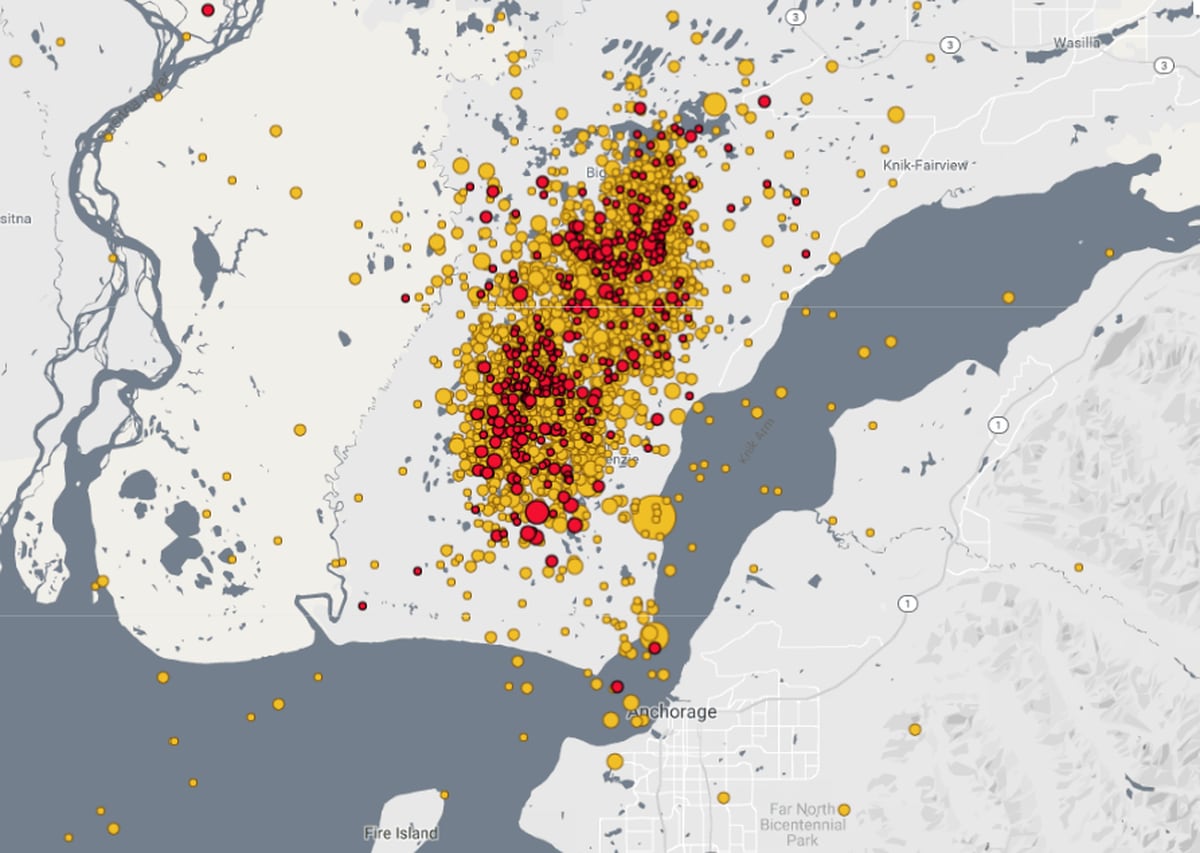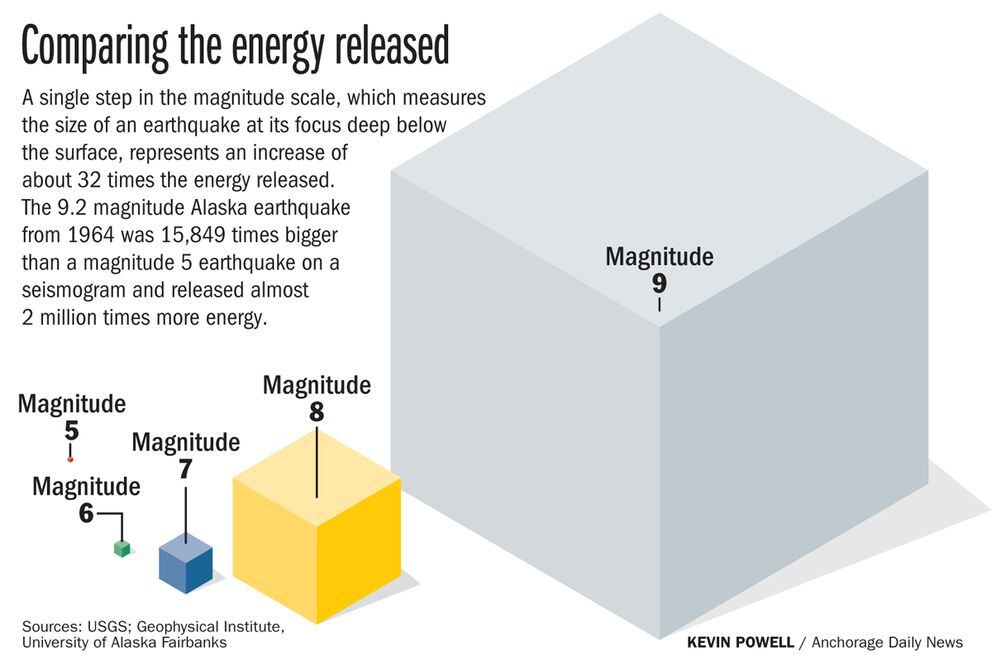2,788 and counting: When do tremors stop
being aftershocks and start being new
earthquakes?
Author:
Updated: 4 hours ago
Published 6 hours ago
Aftershocks recorded after the Nov. 30, 2018 earthquake. (Screengrab from Alaska Earthquake Center website)
These lingering tremors have become an annoyance for many residents. As of 7:30 a.m. Thursday, 2,788 aftershocks had been recorded, of which 181 measured at least 3.0, 20 were at 4.0 or greater and five measured at least 5.0, according to the U.S. Geological Survey.
That’s left some people wondering: Are the shakes that continue to jolt us several days after the initial earthquake truly aftershocks anymore — or are they brand-new earthquakes?
Natalia Ruppert of the Alaska Earthquake Center, based at the University of Alaska Fairbanks, says they are indeed aftershocks.
Earthquakes come in clusters, and seismologists refer to the largest one in a sequence as the “mainshock." The earthquakes that occur in the aftermath of a mainshock continue to be called “aftershocks” until the seismic activity in the region returns back to the level it was at before the mainshock, Ruppert said.
“For an earthquake of this size, we expect the aftershocks to continue for a few months," Ruppert said. "The rate of the aftershocks, however, will be going down with time.”



7 comments:
Prayers for you and your family's continued safety!!
If I was you, I would be eating off paper plates and plastic cups for the next few months!! Of course your Navy days most likely gave you lots of experience with living in a "moving" environment, or so I would guess.
My other thought when I heard about the main shock was thank goodness the tourist season is over. I could not imagine what chaos there would have been if this happened in say July or August with all sorts of RV traffic on the roads.
There are quite a few up here, doing just that!
Yes, it's a good thing that few tourists are here, this time of year. I'm beginning to wonder what Alaska has against holidays. The '64 quake (a 9.2 magnitude) was on Good Friday; this one was a week after Thanksgiving. Hmm.
That sounds incredibly...annoying. And concerning. Stay safe, Reverend.
I've always wondered that, too. Because if they happened by themselves, a 3,4 or 5 would be nothing to sneeze at, either.
Praying for everyone.
Have a blessed Merry Christmas, Reverend.
TB, as each stronger aftershock hits, there's a feeling of alarm and dread, then anger and helplessness, as one waits to see if it's going to be strong & destructive, or just another shake that moves things around. It gets old.
Linda, a 3 or a 4 are not really anything to worry about, unless they're very shallow. Then they feel stronger than they are. A 5 will get your attention; a 6 makes you dive for cover. A 7 throws you around like a rag doll.
This sounds worse than what Hawaii experienced this past summer. The released energy graphic is very interesting and helps put it into perspective. From what I understand, Alaska can be expecting aftershocks for up to another couple of years, correct(?)
Hi, Leigh; you're correct.
Post a Comment